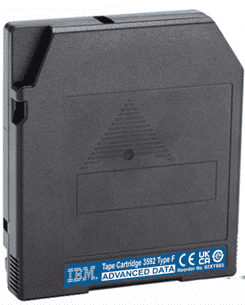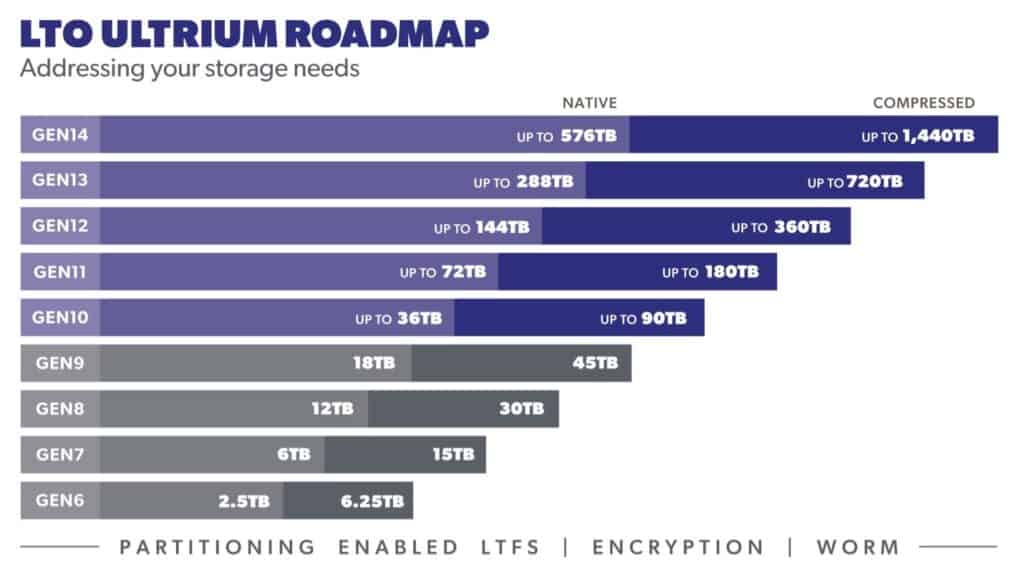 Having lived most of my life in the Northeast, and having endured many cold and snowy winters, I was always jealous of the nice weather in California. Then to add to my jealousy, California was frequently referred to in the press as a “bellwether” state, particularly in politics. The term often applies to a geographic region where political tendencies might predict the eventual results for the entire country. In economics, a bellwether is a leading indicator of an economic trend. When it comes to the data tape industry, I think it’s safe to say that the 50 TB tape system recently announced by Fujifilm and IBM is a bellwether for tape technology.
Having lived most of my life in the Northeast, and having endured many cold and snowy winters, I was always jealous of the nice weather in California. Then to add to my jealousy, California was frequently referred to in the press as a “bellwether” state, particularly in politics. The term often applies to a geographic region where political tendencies might predict the eventual results for the entire country. In economics, a bellwether is a leading indicator of an economic trend. When it comes to the data tape industry, I think it’s safe to say that the 50 TB tape system recently announced by Fujifilm and IBM is a bellwether for tape technology.
 On August 29th, Fujifilm and IBM announced the development of a record capacity 50 TB native tape system featuring IBM’s new TS1170 drive and 3592 JF tape cartridge being produced by Fujifilm. This unprecedented 2.5X leap in capacity compared to the previous generation TS1160 drive and 3592 JE media was made possible in part by the deployment of a new hybrid magnetic particle mix of current generation Barium Ferrite and next gen Strontium Ferrite in the new 3592 JF media. This hybrid mix results in smaller magnetic particles providing enhanced magnetic properties and improved areal density. In addition, the tape length of 3592 JF was increased by 15% compared to 3592 JE by using a thinner and stronger base film.
On August 29th, Fujifilm and IBM announced the development of a record capacity 50 TB native tape system featuring IBM’s new TS1170 drive and 3592 JF tape cartridge being produced by Fujifilm. This unprecedented 2.5X leap in capacity compared to the previous generation TS1160 drive and 3592 JE media was made possible in part by the deployment of a new hybrid magnetic particle mix of current generation Barium Ferrite and next gen Strontium Ferrite in the new 3592 JF media. This hybrid mix results in smaller magnetic particles providing enhanced magnetic properties and improved areal density. In addition, the tape length of 3592 JF was increased by 15% compared to 3592 JE by using a thinner and stronger base film.
In mid-December of 2020, Fujifilm and IBM successfully demonstrated a record areal density of 317 Gbpsi (billion bits per square inch) on magnetic tape coated with next generation Strontium Ferrite magnetic particles. This areal density achievement would yield an amazing native storage capacity of 580 TB on a standard sized data cartridge of the future. By mixing Strontium Ferrite with Barium Ferrite now, 50 TB has been made possible.
Connecting Enterprise Tape to LTO
In a white paper jointly published by IBM and Fujifilm in 2017, entitled, Defining the Future of Tape, the connection between the enterprise tape market and LTO market was discussed. According to the paper, IBM’s strategy is to release new technology in the enterprise market space first followed by release into the LTO market. Barium Ferrite followed this path to market being first deployed in 3592 tapes in 2008 and then in LTO-6 in 2012 and continues to be used in later generations of 3592 and LTO. Since the enterprise tape market tends to consist of larger customers with close communication with IBM, feedback on performance happens quickly along with any necessary adjustments. When ready, the technology can be released into the broader LTO market with higher volumes. This provides IBM with more statistical data on how the technology performs and further drives quality improvements in both market segments. This cycle of continuous improvement has resulted in tape’s outstanding reliability, durability and long archival life.
LTO Roadmap Achievable

In September of 2022, the LTO Technology Provider Companies (HPE, IBM, and Quantum) announced an updated LTO roadmap out to generation 14 with a native capacity of 576 TB. While we are currently shipping LTO-9 at 18.0 TB, the next stop on the roadmap will be LTO-10 with a capacity of 36 TB. Given the product debut of 3592 JF at 50 TB and the Strontium Ferrite demo at 580 TB, both LTO-10 and LTO-14 appear to be easily achievable. The roadmap is of vital importance to customers with the need to plan for long-term data retention of ever-increasing data volumes well into the future.
Analyst’s Reactions to 50 TB Tape
IBM recently had the opportunity to gather key industry analysts to get their first impressions of the 50 TB announcement. The general feedback was that the 50 TB tape system is compelling, a dramatic improvement that will accelerate tape adoption to meet sustainability, TCO, cybersecurity, and floor space challenges while supporting rapid growth in the active archive tier
Meeting the Demands of the Zettabyte Age
With the relentless growth of data and the 26 or so zettabytes that must be stored by the end of this decade, the industry will need copious amounts of SSD, HDD and tape systems to manage valuable data throughout its lifecycle. Being able to store the majority of data that quickly goes cold but can’t be deleted, means tape will play an increasingly important role. Providing cost effective, sustainable and secure tape solutions well into the future is great news for the industry and the availability of 50 TB tape is indeed a good bellwether for the technology.
